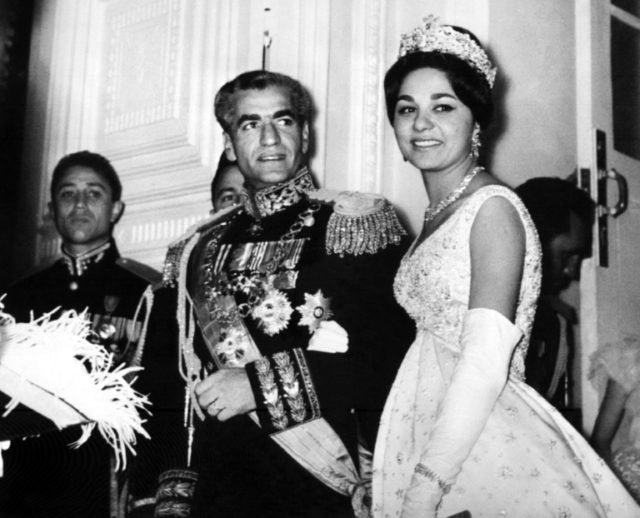Paris (AFP) – Iran’s last shah, Mohammad Reza Pahlavi, who fled his country 40 years ago under pressure from massive street protests, was the “King of Kings” who came to be damned by his own people.
His exile with his third wife Farah Diba on January 16, 1979 ended not only his 37-year reign but also 2,500 years of monarchy in Iran, replaced by an Islamic system that remains in charge today.
Pahlavi would die from cancer just 18 months later at the age of 60, broken and stateless, having been refused asylum by his former ally, the United States.
– ‘Island of stability’ –
Tyrannical, arrogant, extravagant but also modernising, the playboy king started out as a darling of the US which groomed him to act as sentry in the Middle East against the Soviet Union.
The “great leadership of the shah” had made Iran “an island of stability in one of the more troubled areas of the world,” US president Jimmy Carter declared just a year before the 1979 Islamic revolution.
Pahlavi enjoyed all the trappings of his royal status, believing his escape from two assassination attempts was proof of his divine calling.
But gradually his Western-style leanings and reforms, as well as his increasingly autocratic behaviour and lavish lifestyle, contributed to his alienation among Iranians and angered the conservative clerics who would help drive the revolution that sent him fleeing.
– Replaces forced-out father –
Pahlavi was just 21 when he ascended to the throne on September 16, 1941 to replace his father, Reza Khan, who had been forced to abdicate following an invasion by Britain and the Soviet Union which were unhappy at his neutrality in their stand against Germany during World War II.
Born on October 26, 1919 and educated in Switzerland, Pahlavi was at first seen as only a pale copy of his military strongman father.
It was only 12 years later, following a CIA-backed coup against his popular prime minister Mohammad Mossadegh, who had nationalised the oil industry, that Pahlavi began to amass real power.
– Modernising reforms –
Determined to drag Iran rapidly into the modern age, he launched wide-ranging education and healthcare programmes, while hosting leaders from around the world in his Napoleonic uniform.
He helped drive up global oil prices in the early 1970s, and poured the resulting billions into nuclear power projects and new military hardware. As a pilot himself, much of the money went into the airforce.
By then, the king was married to the glamorous Soraya Esfandiary Bakhtiary, having divorced his Egyptian first wife Fawzieh — sister of King Farouq of Egypt — after she had given birth to a daughter but no sons.
They too divorced in 1958 when Princess Soraya failed to produce an heir. Farah Diba, whom he married in 1959, bore him two sons and two daughters.
Many trace the beginning of the shah’s downfall to 1963 when he implemented the “White Revolution”, a large-scale reform programme centred on agriculture that alienated the traditional land-owning elite and their clerical allies, who also fiercely opposed the decision to grant women the vote.
The following year he exiled Shiite religious leader Ruhollah Khomeini, who railed against the shah’s perceived kowtowing to the West.
Khomeini’s star grew in exile and he would eventually become the figurehead of the Islamic revolution that ended Pahlavi’s reign.
Major economic powers queued up in Tehran to take advantage of the oil boom while closing their eyes to the authoritarian drift, as the shah outlawed opposition parties and relied ever-more heavily on his feared secret police, the SAVAK.
Angry over US criticism of his human rights record, Pahlavi grew closer to the Soviet Union and China, while also launching an economic partnership with Europe and in particular France.
– ‘King of kings’ –
At home the billionaire shah’s extravagance and the wealth lavished on those in the royal circle drew increasing criticism.
He took on the traditional title of “King of Kings” in a lavish coronation ceremony in 1967, having already adopted the specially chosen moniker of “Light of the Aryans” two years earlier.
The unprecedented luxury of his party to mark the mythical 2,500th anniversary of the Persian monarchy in 1971 was also vilified by his left-wing and clerical opponents.
The shah’s power began to crumble in January 1978 after a daily newspaper was forced to publish an article critical of Khomeini.
It sparked demonstrations by theology students that were violently crushed, the memorials to victims leading to a cycle of protests that grew through the year.
Unable to comprehend why his people were ungrateful for his modernising efforts, the shah grew increasingly paranoid and reclusive.
A final bid to arrest the uprising, by apologising for his mistakes and lifting many repressive measures, came too late and only fuelled the protests.
After months of rolling unrest, the shah was prodded into exile by the United States, choosing to fly out to Egypt, never to return.

COMMENTS
Please let us know if you're having issues with commenting.